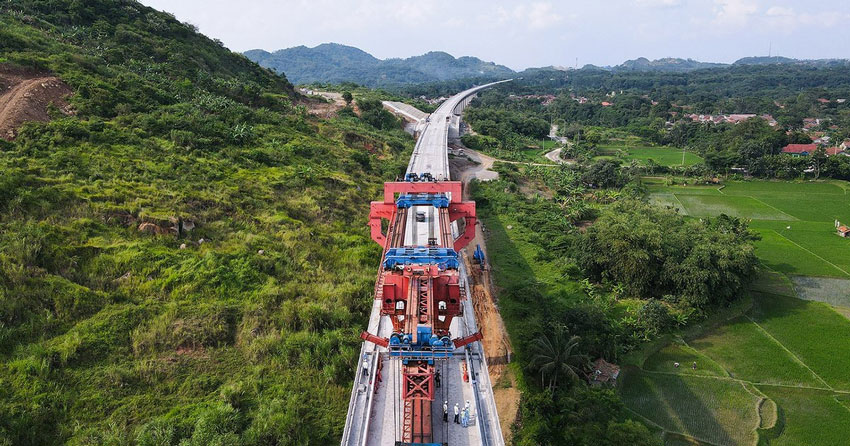By Dr Mehmood Ul Hassan Khan
Copyright pakobserver

The prominence of the BRI during the most recently held 25th SCO and “SCO Plus” vividly reflects Xi’s vision of global shared prosperity Global Governance Initiative (GGI) rightly projecting Chinese style of modernization among the member countries.
During the last 12 years Xi’s vision & Global Initiative’s and Chinese style of modernization has further connected the BRI and has transcended geographical boundaries, bridged cultural differences and aligned development needs of all the member countries.
Comparative studies and critical analysis of China’s modern economic history and development patterns reveal that in 2024-2025, Chinese-style modernization mainly emphasized on high-quality development, technological self-reliance and a shift to a knowledge intensive economy, driven by the new development paradigm and completion of the 14th Five-Year Plan which further developed and diversified the pace, scope, expansion and utility of the BRI in the world.
Furthermore, promotion of the digital economy, accelerating green development, and fulfilling goals for shared prosperity through advancements in education, healthcare, and social security have boosted the BRI. High-quality development, technological self-reliance, and a new development paradigm emphasizing domestic circulation while integrating with the global economy are driving industrial modernization and sustainable industries. Additionally, completion of the 14th Five-Year Plan, laying the groundwork for the 15th, along with the shift from capital- and labour-intensive industries to knowledge- and technology-intensive sectors, and prioritizing shared prosperity through employment, education, social security, and healthcare, has immensely strengthened the socio-economic potential of BRI member countries.
Remarkably, during the keynote speech at the opening ceremony of the Third BRI Forum for International Cooperation convened in October 2023, President Xi Jinping announced China’s support for eight initiatives aimed at advancing the high-quality development of the BRI. So building of the multidimensional BRI connectivity network through speed up high-quality development of the China-Europe Railway Express, participate in the trans-Caspian international transportation corridor and host the China-Europe Railway Express Cooperation Forum, building of a new logistics corridor across the Eurasian continent linked by direct railway and road transportation, openness and open world economy, with its total trade in goods and services expected to exceed 32 trillion U.S. dollars and 5 trillion U.S. dollars respectively in the 2024-2028 period and establishing of the pilot zones for Silk Road e-commerce cooperation and enter into free trade agreements and investment protection treaties with more countries have become new normal in the BRI Family.
Additionally, carrying out practical cooperation for the BRI through promoting both signature projects and “small yet smart” livelihood programs, promotion of green development deepening cooperation in areas such as green infrastructure, green energy and green transportation and step up support for the BRI International Green Development Coalition, holding of the BRI Green Innovation Conference and establishing dialogue and exchange mechanisms for the solar industry and a network of experts on green and low-carbon development, advance scientific and technological innovation implementing the BRI Science, Technology and Innovation Cooperation Action Plan and holding of the BRI Conference on Science and Technology Exchange and last but not least, support people-to-people exchanges and promotion of integrity-based BRI cooperation has further strengthened the institutional building for international BRI cooperation.
It is a good omen that China has started work with its BRI partner countries to strengthen the building of multilateral cooperation platforms covering energy, taxation, finance, green development, disaster reduction, anti-corruption, think tank, media, culture and other fields.
Over the past year, with the concerted efforts of BRI partner countries, these initiatives have steadily progressed and achieved remarkable results, laying a solid foundation for the second decade of the BRI. The experience has demonstrated that in today’s global context, the pursuit of development, growth and shared prosperity is a common aspiration for all nations.
The BRI continues to gain worldwide consensus and has entered a phase of significant opportunity. It is well-positioned to become ballast for building an open world economy, a driving force for collective growth and a catalyst for global modernization. According to the White Paper on China’s Energy Transition released in August 2024, China’s BRI energy cooperation partnership now includes 33 member countries spanning six continents, including Asia and Africa.
To strengthen the Green Silk Road and embed sustainability across the Belt and Road Initiative, China launched the Belt and Road International Green Development Coalition to help partner countries achieve UN 2030 Sustainable Development Goals. By mid-2024, the coalition had over 150 partners from more than 40 nations, including environmental authorities from over 20 BRI members. Ahead of the 2024 Forum on China-Africa Cooperation Summit in Beijing, China pledged to enhance Africa’s digital infrastructure, expand high-speed Internet, support smart cities, and advance cooperation in 5G, big data, cloud computing, fintech, and artificial intelligence. The construction of the Digital Silk Road has promoted comprehensive cooperation, narrowed the “digital divide,” and enabled BRI partner countries to build a shared future in cyberspace while benefiting from digital technology for a brighter tomorrow.
The Luban Workshop has become a shining example of the BRI vocational education cooperation. 17 Luban Workshops have already been established in 15 African countries, blossoming into a flagship model of China’s international vocational education cooperation.
In Central Asia, the Luban Workshop in Tajikistan has been operating successfully for over a year, while projects in Uzbekistan and Turkmenistan are progressing actively. Kyrgyzstan recently inaugurated a smart classroom for its Luban Workshop. The first Luban Workshop in Kazakhstan began trial operations at the end of 2023.
In summary, it is evident that during 2025 and beyond the BRI and its Chinese style of modernization continue to evolve, focusing on high-quality, open, green and clean” projects with increased emphasis on green and digital sectors, alongside continued investment in traditional industries like oil and gas, a reflection of China’s goal to become a global power in high-tech industries and achieve common prosperity through sustainable development.
It is reality that the Chinese style of modernization has built numerous smart cities, developed knowledge based economies and diversified socio-economic potential of all the BRI member countries highlighting the productivity and of the Chinese style of modernization.
It seems that a new era of qualitative industrialization, digitalization, AI and innovation has been institutionalized in all the BRI member countries.
The writer suggests that policy makers of Pakistan should carefully study and seek lessons from the Chinese style of modernization building a sustainable economy and modern means of energy in the country.
(mehmoodulhassankhan@yahoo.com)



